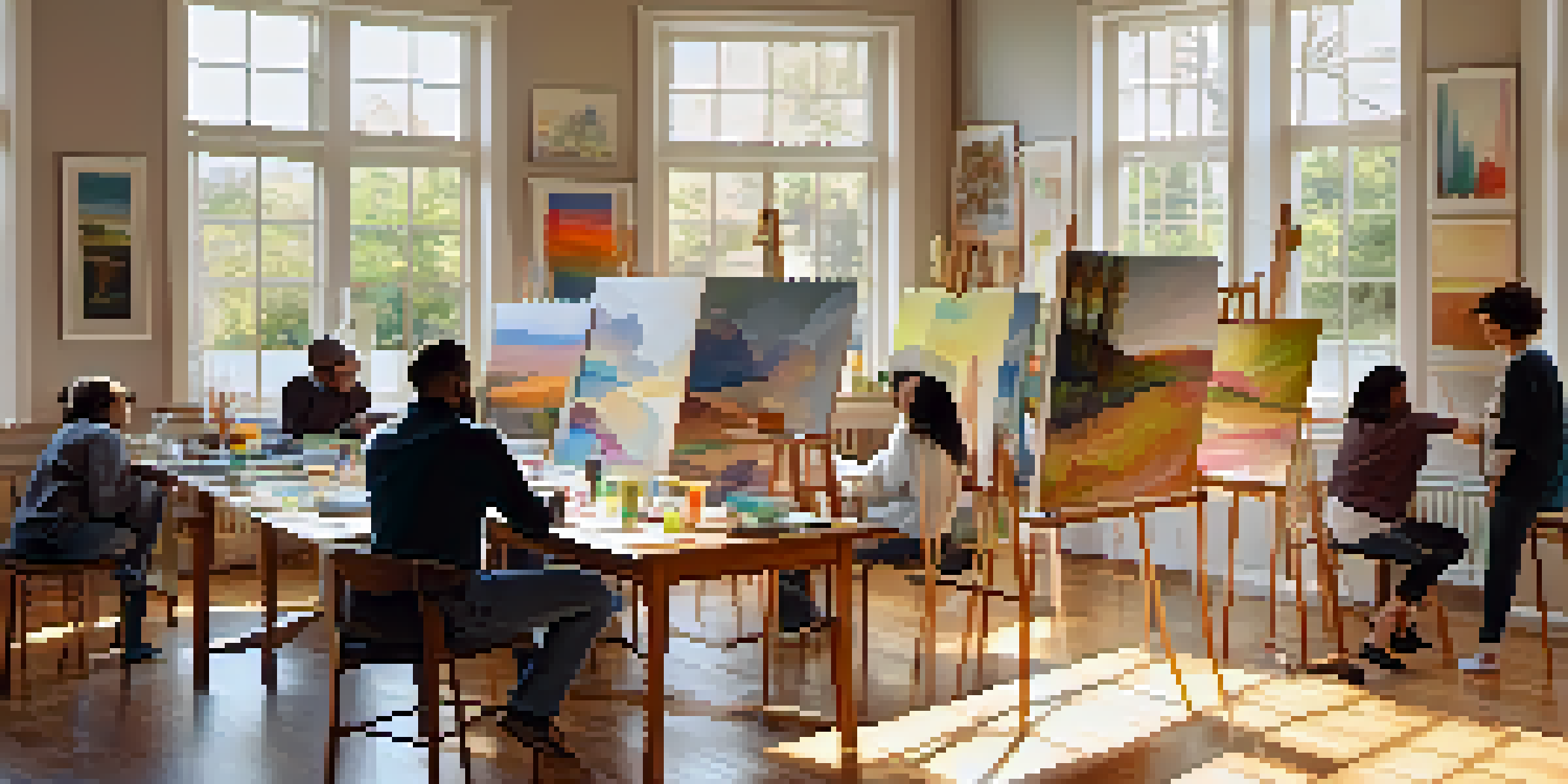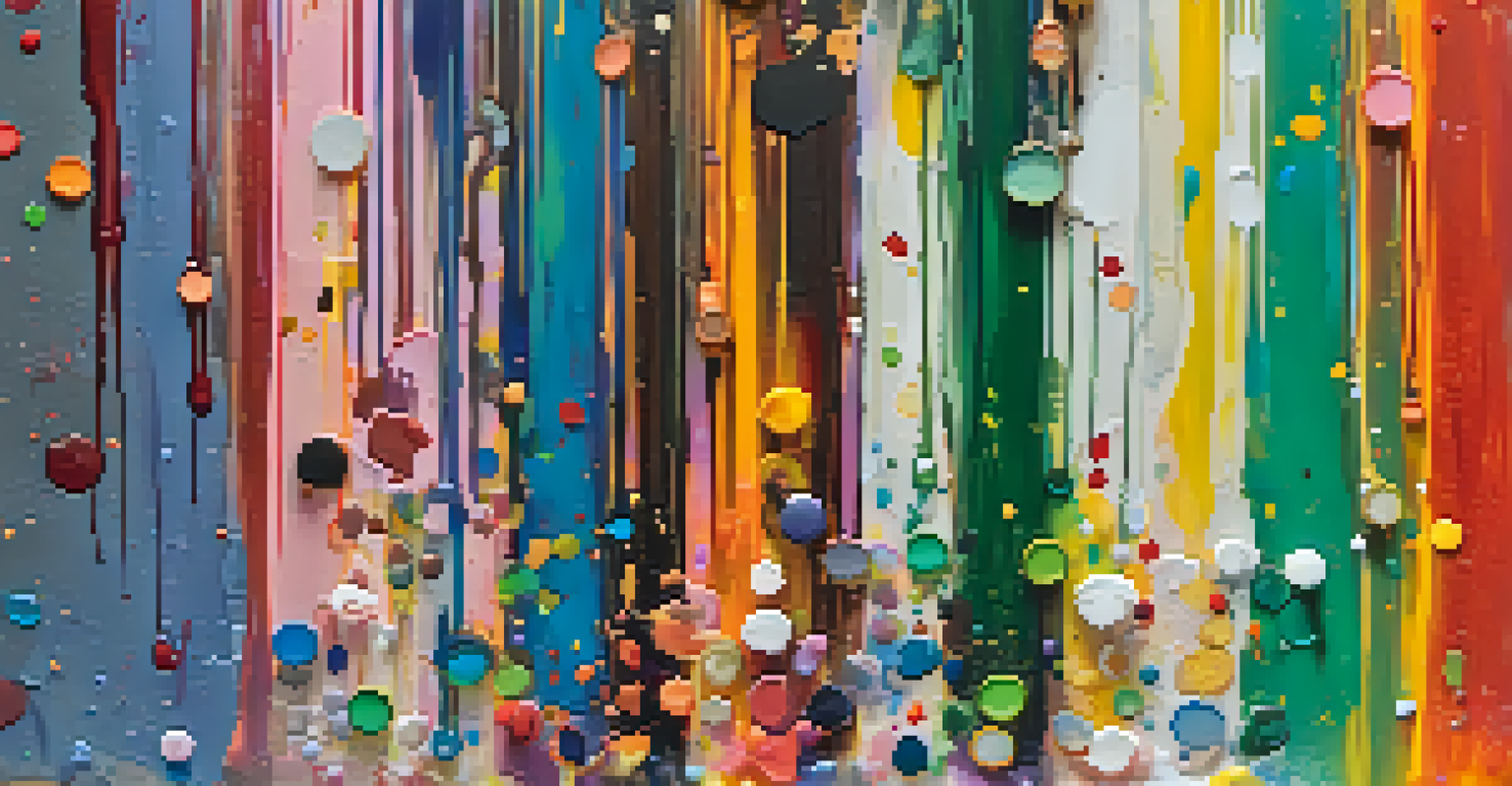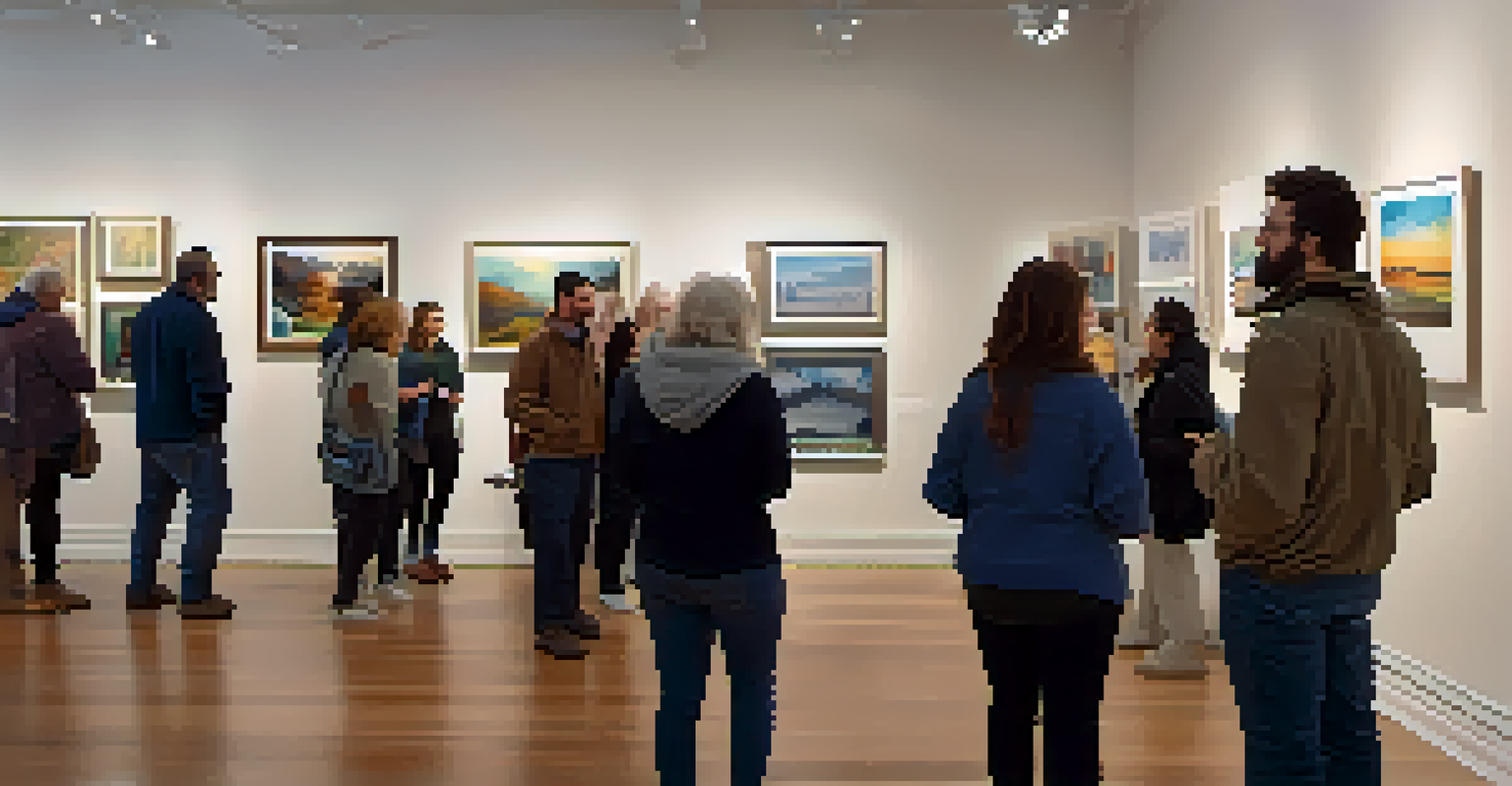Using Visual Arts to Enhance Healing in Addiction Recovery

Understanding the Connection Between Art and Healing
Visual arts have long been recognized as a powerful means of expression. In the context of addiction recovery, they serve not only as a creative outlet but also as a tool for healing. Engaging in artistic activities can help individuals articulate feelings that are otherwise difficult to express, making the healing process more accessible.
Every artist was first an amateur.
Art can bridge the gap between emotions and communication, providing a safe space for those in recovery. When words fail, colors, shapes, and textures can convey the complexities of one's experiences. This connection fosters a sense of understanding and validation, which is crucial in recovery.
Moreover, the act of creating art can be meditative, allowing individuals to focus on the present moment. This mindfulness can be immensely beneficial in reducing anxiety and promoting emotional well-being as they navigate their recovery journey.
The Role of Art Therapy in Addiction Recovery
Art therapy is a structured therapeutic approach that employs visual arts to promote healing. In addiction recovery, it offers a safe, non-judgmental environment where individuals can explore their emotions and experiences creatively. This method encourages participants to engage with their feelings without the pressure of verbal articulation.

Through guided sessions with art therapists, individuals can uncover underlying issues that may contribute to their addiction. This process can lead to insights that enhance personal growth and self-awareness, crucial components in sustainable recovery. Additionally, it fosters a sense of accomplishment and boosts self-esteem as individuals create tangible works of art.
Art as a Healing Tool
Engaging in visual arts provides individuals in recovery a powerful means to express emotions and foster healing.
Art therapy also promotes social interaction, as participants often work in groups. This communal aspect can break the isolation that many feel during recovery, helping to build a supportive network that is vital for long-term success.
Creative Expression as a Coping Mechanism
For many in recovery, finding healthy coping mechanisms is essential. Engaging in visual arts provides a constructive way to process emotions and manage stress. Instead of turning to substances, individuals can channel their feelings into painting, drawing, or sculpting.
Art is the most beautiful of all lies.
This creative outlet not only distracts from cravings but also encourages positive emotional release. The act of creating can be empowering, reinforcing the idea that they have control over their lives and feelings. It’s a way of reclaiming agency that addiction often strips away.
Furthermore, participants often find joy and satisfaction in their artistic endeavors. This sense of achievement can foster resilience, helping them to navigate challenges in recovery with greater confidence and a positive outlook.
The Science Behind Art and Emotional Well-Being
Research has shown that engaging in creative activities can lead to improved mental health outcomes. Studies indicate that creating art can reduce levels of anxiety and depression, which are often heightened during recovery. This physiological response is attributed to the release of endorphins, the body's natural feel-good chemicals.
Moreover, engaging with visual arts can stimulate brain areas associated with emotion and cognition. This stimulation can lead to enhanced problem-solving skills and emotional regulation, both of which are critical in addiction recovery. By boosting cognitive function and emotional resilience, art can play a significant role in overall well-being.
Art Therapy Enhances Recovery
Art therapy creates a safe space for individuals to explore feelings, leading to personal growth and improved self-esteem.
As individuals explore various artistic mediums, they can also develop new skills that enhance their sense of identity. This personal growth is integral to rebuilding self-worth, which is often damaged by addiction.
Building Community Through Art
Community plays a vital role in addiction recovery, and visual arts can be a powerful tool for fostering connections. Group art projects or classes provide a unique opportunity for participants to bond over shared experiences. This collective creativity can create lasting friendships and support networks.
In a community setting, individuals often feel a sense of belonging, which is crucial for recovery. The collaborative nature of art can prompt discussions and shared learning, allowing participants to feel less isolated in their struggles. These connections can be a lifeline during challenging times.
Additionally, showcasing artwork in community events can empower individuals by validating their experiences. It allows them to share their journey with others, further solidifying their recovery and encouraging others to seek help.
Overcoming Barriers to Artistic Expression
Despite the benefits, many individuals may feel hesitant to engage in visual arts due to self-doubt or fear of judgment. It's essential to create an environment where everyone feels safe to express themselves without criticism. This supportive atmosphere can help individuals overcome their apprehensions and fully embrace the healing potential of art.
Encouraging exploration rather than perfection can help participants focus on the process rather than the outcome. Reminding individuals that art is subjective and personal can alleviate the pressure to create something 'worthy.' This shift in perspective can unlock creativity and foster deeper emotional connections.
Community Connection Through Art
Group art activities foster a sense of belonging, creating supportive networks essential for long-term recovery.
Furthermore, providing access to various art supplies and resources can empower individuals to explore their artistic side. Workshops and community programs can introduce new techniques and mediums, encouraging participants to find their unique voice.
Incorporating Visual Arts into Recovery Programs
Integrating visual arts into addiction recovery programs can enhance overall effectiveness. By offering art therapy sessions alongside traditional treatment methods, programs can address the emotional and psychological aspects of addiction more holistically. This approach recognizes the importance of creative expression in the healing journey.
Recovery programs can include various art-related activities, such as painting classes, mural projects, or art exhibitions. These activities not only engage participants but also provide opportunities for skill development and self-discovery. Incorporating visual arts can make recovery feel more accessible and enjoyable.

As the stigma surrounding addiction continues to diminish, showcasing art created by individuals in recovery can inspire hope and resilience. This visibility can encourage others to seek help, reinforcing the idea that recovery is not only possible but can also be a beautiful journey.